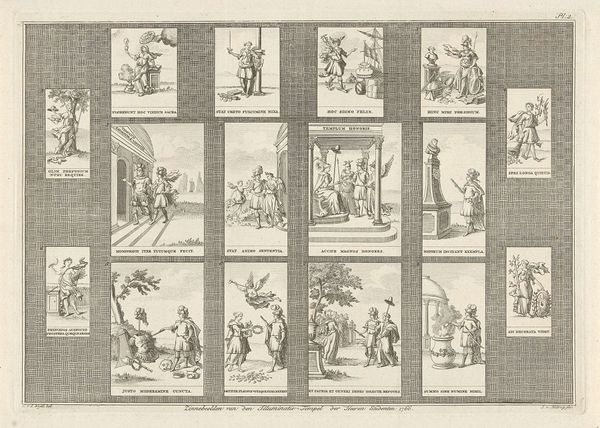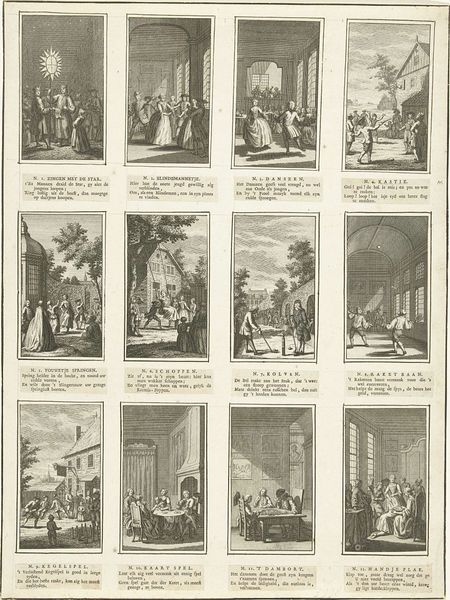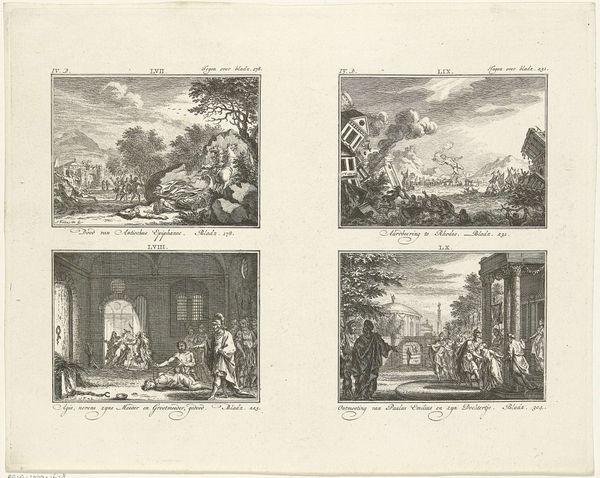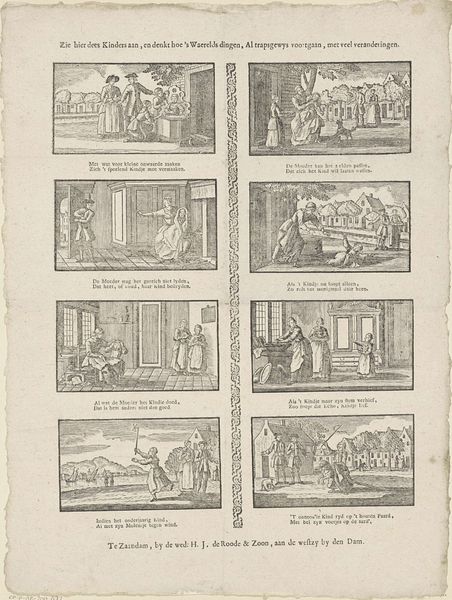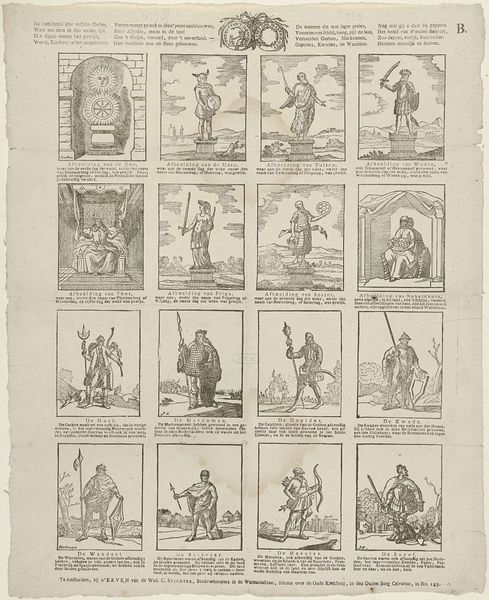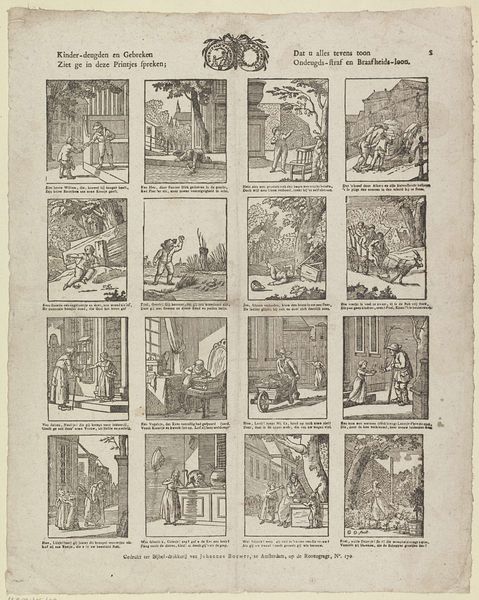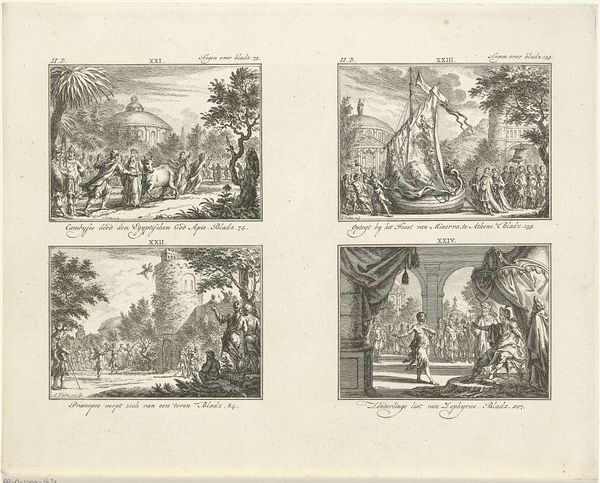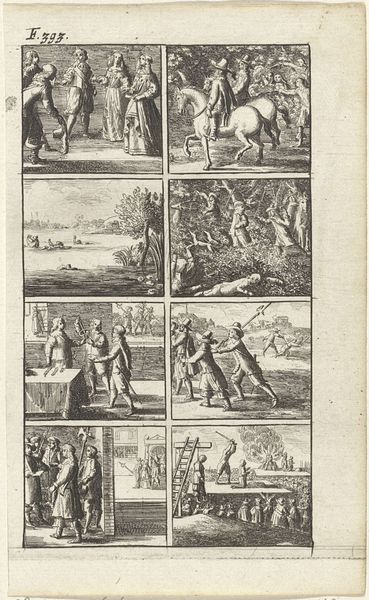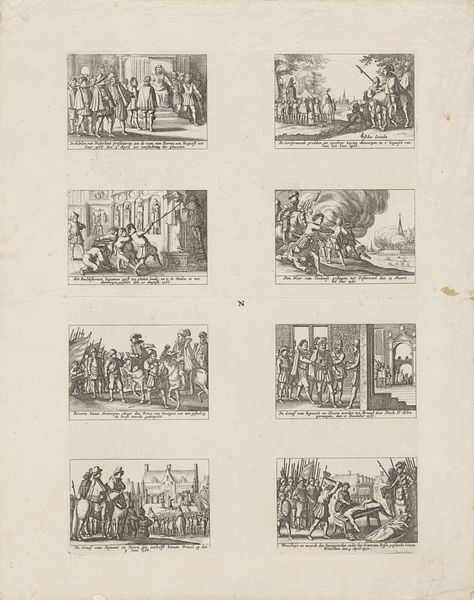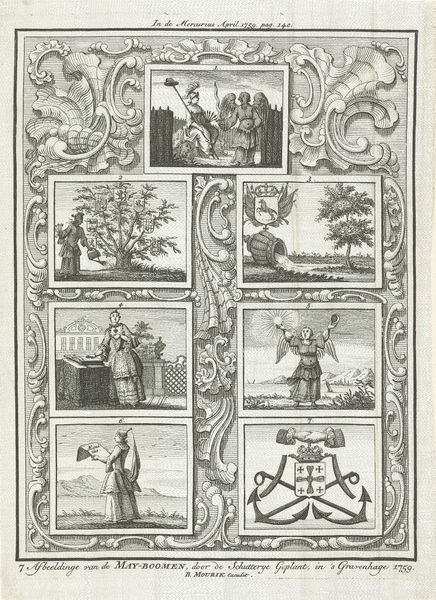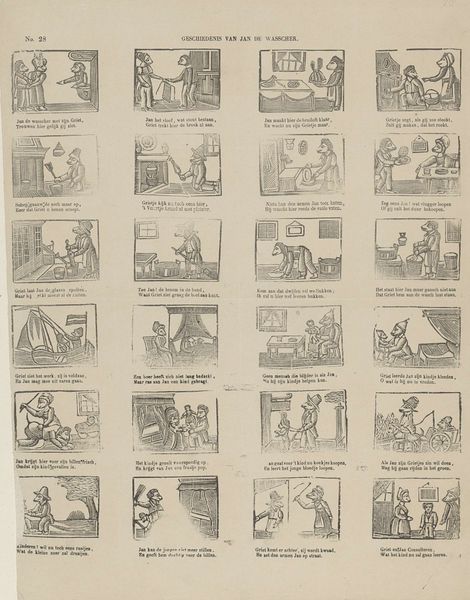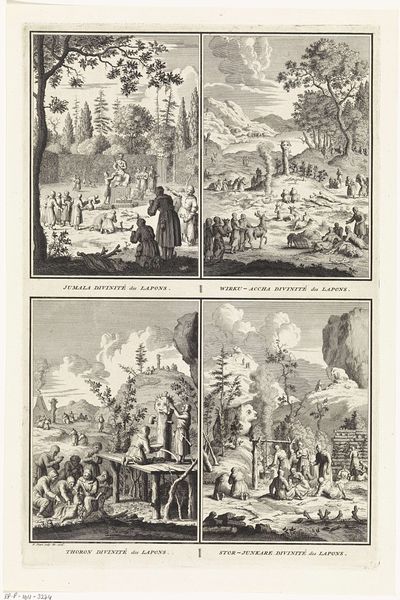
print, engraving
#
narrative-art
#
dutch-golden-age
# print
#
genre-painting
#
engraving
Dimensions: height 357 mm, width 269 mm, height 85 mm, width 49 mm
Copyright: Rijks Museum: Open Domain
Editor: Here we have "Hollandse vermaken in de twaalf maanden, ca. 1750" – a print by Jan Caspar Philips at the Rijksmuseum. It’s an engraving, and it almost looks like a calendar, with these little vignettes. They seem to capture daily life... a bit like visual proverbs. What strikes you when you look at this piece? Curator: Oh, this piece is a real charmer! It whisks me away to a bustling 18th-century Holland. See how each little scene hums with its own story? I like to imagine myself right there with them – dodging skaters on thin ice, or haggling over produce in the marketplace. But it is the artist, who so masterfully compresses entire worlds into such tiny frames, I feel deeply for. What do you notice about the way Philips uses light and shadow? Editor: Well, the contrast is quite striking for a print. It almost creates a dramatic effect, given how everyday the scenes are. It's like he’s elevating the mundane. Is that typical for this period? Curator: Precisely! That dramatic touch is pure Dutch Golden Age – they knew how to find poetry in a humble bowl of fruit, or a rowdy game of kolf. And this "elevation" you mention – yes, artists saw it as their noble duty to celebrate the dignity and beauty of everyday Dutch life. Now, doesn’t it make you want to time-travel and experience it all first-hand? Editor: Definitely! It’s funny how such a small print can evoke such a vivid sense of time and place. I didn't expect to feel so drawn into the daily lives of people from so long ago. Curator: Indeed. Art allows us to eavesdrop on history. Next time, let's imagine the soundscape these images bring to our inner ear: frozen lakes squeaking, hawkers calling...oh, my, time traveling is a wonderful journey in itself!
Comments
No comments
Be the first to comment and join the conversation on the ultimate creative platform.
